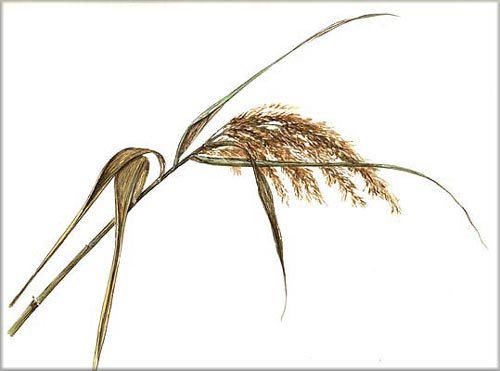Common Reed - Phragmites australis
The dominant species of cane and reed beds, giving the most common and widespread plant formation found in Italian fresh and slightly brackish waters.
When in flower, the inflorescence lasts until the old stems fall off, the plant can be recognised immediately on sight. It never grows alone and when it has reached a certain level of development it can be distinguished by its characteristic glaucous green leaves.
It could only be mistaken for other grasses in its early phases; in this case the thick crown of hairs that form the ligule at the leaf base can be a useful distinguishing characteristic.
A very vigorous plant, capable of growing surprisingly high in favourable conditions (with stems over 5 metres high) but also of colonising fairly unsuitable habitats with stunted populations sometimes less than a metre tall.
Essentially it propagates by vegetative reproduction by developing long rhizomes which, swollen and hollow inside, produce numerous new shoots.
It grows in semi-submerged conditions (reaching up to 1.5 metres in depth) in floating formations (floating islands); generally it is dominant in habitats in an advanced state of in-filling. Along water courses, it behaves like a riparian plant.
The Common Reed, or Canella as it is often called in Tuscany, has long been gathered for mat making, fodder and bedding material for stables.





